“Geography is fate: for Africa’s civilizations, its vast landscapes shaped the rules of advancement.”
Did you know? At over 30 million square kilometers, Africa is the world’s second-largest continent—yet throughout human history, its societies have remained decentralized longer than any other. This reveals a sobering reality: not all landscapes invite collaboration, trade, or unity. If you’re a founder or business leader in Africa, learning from this geopolitical blueprint could transform your next move. In this confidential briefing for Africa’s emerging sovereigns, we’ll diagnose the hidden logic behind why one opinion as to why-Africa’s geography worked-against its civilizations advancement rings so true—and what this means for your legacy as a modern builder.
Startling Realities: How Geography of Africa Set the Stage for Its Societies
Africa’s surface story is mesmerizing—a continent of breathtaking diversity, from the endless Sahara Desert in the north to the equatorial rainforests of the Congo Basin, the towering peaks of East Africa, and the rolling plateaus of the south. Yet beneath its natural splendor lies the strategic truth: the geography of Africa imposed unique challenges on its civilizations’ prospects for unity, trade, and technological leapfrogging.
As we examine one opinion as to why-Africa’s geography worked-against its civilizations advancement, it’s critical to see physical obstacles not as mere backdrops but as dominant forces that dictated the continent’s paths of development. Unlike Eurasia, where rivers and plains often connected cities and societies, Africa’s fragmented rivers and climate zones created pockets of dense civilization surrounded by formidable barriers. This pattern fostered incredible ethnic, linguistic, and cultural diversity—yet also made it nearly impossible for the continent to forge the sprawling empires and networks seen elsewhere. For African entrepreneurs, the lesson is clear: mastery of environment is no luxury; it’s your prime directive.
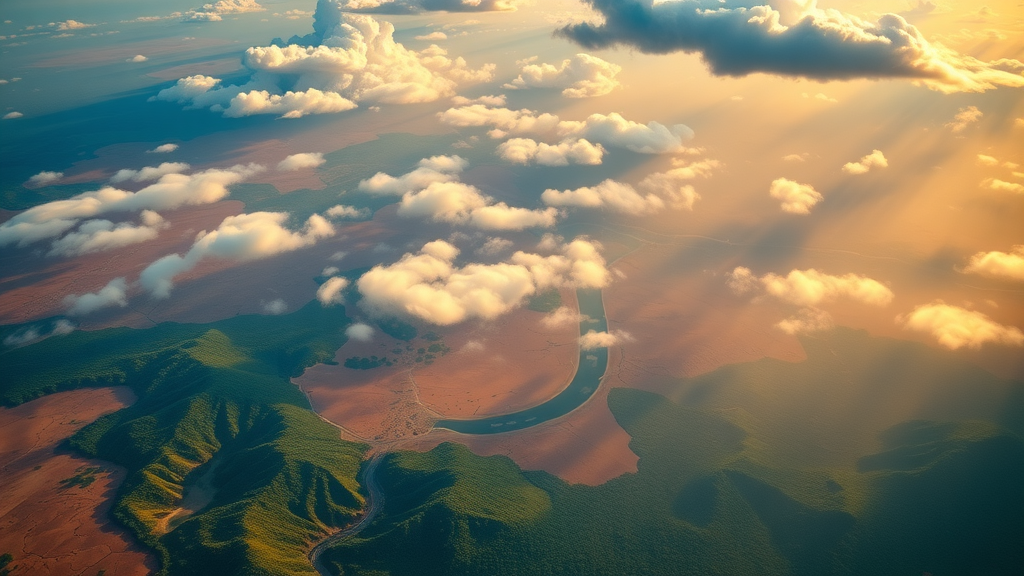
An Unexpected Statistic: Africa's Perpetual Civilizational Challenge
Consider this: until roughly 500 years ago, the largest continuous empires in Africa—such as Ancient Egypt or the Mali Empire—were the exception, not the rule. By contrast, Eurasia and even South America witnessed rapid imperial growth and consolidation, partly fueled by geographic configurations that promoted connectivity. In Africa, the entrenchment of the Sahara desert, the sudden shifts between climate zones, and the east-to-west orientation of river systems often worked against the rise of enduring centralized states. The result: wealth of innovation, but a pattern of persistent fragmentation.
Opening the Map: The Geography of Africa in One Glance
The geography of Africa is a mosaic of extremes—arid stretches like the Sahara, tropical rainforests, savanna grasslands, and isolated highlands. With two major deserts (Sahara and Kalahari), world-famous rivers (Nile, Niger, Congo), and a highly variable climate, Africa’s physical environment channeled both opportunity and constraint. Unlike areas where the land invites expansion (the Eurasian steppes or the plains of North America), Africa’s physical barriers made communication, migration, and trade a high-stakes venture.
| Feature | Impact on Civilization | Example (Ancient Africa context) |
|---|---|---|
| Sahara Desert | Acts as a formidable barrier, divides North and Sub-Saharan Africa, impedes overland contact | Rise of independent cultures north/south of the Sahara; limited direct exchange |
| Rainforest Belt | Dense vegetation, disease, and poor soil limit large-scale farming, isolate communities | Fragmented societies in West and Central Africa; reliance on river transport for trade |
| Nile River | Enables agricultural surpluses, supports monumental civilization | Ancient Egypt–uniquely dependable compared to other river systems |
| Great Rift Valley & Highlands | Natural fortresses and microclimates, support independent, diverse societies | Formation of Ethiopian and East African kingdoms |
| Fragmented Rivers (Niger, Congo) | Disjointed navigation and seasonal flooding hinder unified development | City-states and kingdoms along river bends rather than large empires |
What You'll Learn: The Strategic Blueprint
- How the climate zone variations of Africa shaped civilizations
- Why trade routes were often fragmented
- Unique origins and outcomes for ancient Africa’s societal architectures
- Actionable insights for African business on leveraging geography strategically
Africa's Geographic Framework: The Strategic Compass
Decoding Africa's Climate Zones and Their Societal Effects
To understand why one opinion as to why-Africa’s geography worked-against its civilizations advancement holds water, start with climate. Africa spans equatorial rainforests, arid deserts, savannas, and mountainous highlands. Each climate zone—from the rainy, tsetse fly-ridden jungles of Central and West Africa to the harsh climate of the Sahara—forced African societies into a cycle of relentless adaptation rather than permanent consolidation.
For instance, while the annual rainy season creates fertile soil in some regions, it also fosters humidity-borne diseases, making animal husbandry and dense urbanization challenging. The Bantu people’s migration across central, east, and south Africa was partly a search for arable, disease-free land. Meanwhile, seasonal droughts and erratic rainfall frequently decimated crops in the Sahel and savannas, keeping population densities low and encouraging nimble, decentralized societal structures. These dynamics underscore why African leaders must think in strategic microregions—not just broad strategies borrowed from the rest of the world.
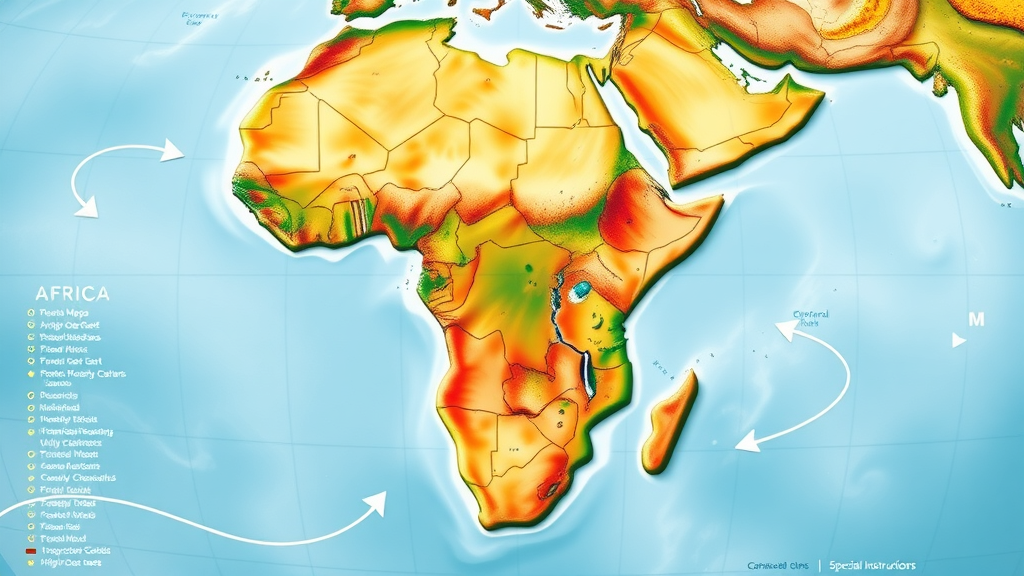
Terrain, Rivers, and Resource Dispersion: Barriers or Opportunities?
Africa’s immense rivers flow in unpredictable patterns, often interrupted by falls and rapids that hinder navigation and integration. Unlike the long, calm, navigable rivers of the Middle East, Europe, or South America, the Nile is the major exception—its steady, northward stretch underpinned Ancient Egypt’s rise by making irrigation and transportation possible across thousands of years. Elsewhere, the Niger and Congo rivers serve as both lifelines and boundaries, carving out pockets of fertile soil yet isolating communities from each other due to seasonal flooding and swampy deltas.
The region’s mountains and plateaus created dizzying diversity in microclimates but segmented african societies into localized domains. This geographic fracturing proved double-edged: while it protected against large-scale invasions and preserved cultural plurality, it also stymied efforts to build continental trade routes or empires. The distribution of natural resources—gold in West Africa, copper in Katanga, iron in the highlands—offered competitive advantage but amplified the strategic importance of rivers and terrain, compelling communities to guard access through innovation or, sometimes, isolation.
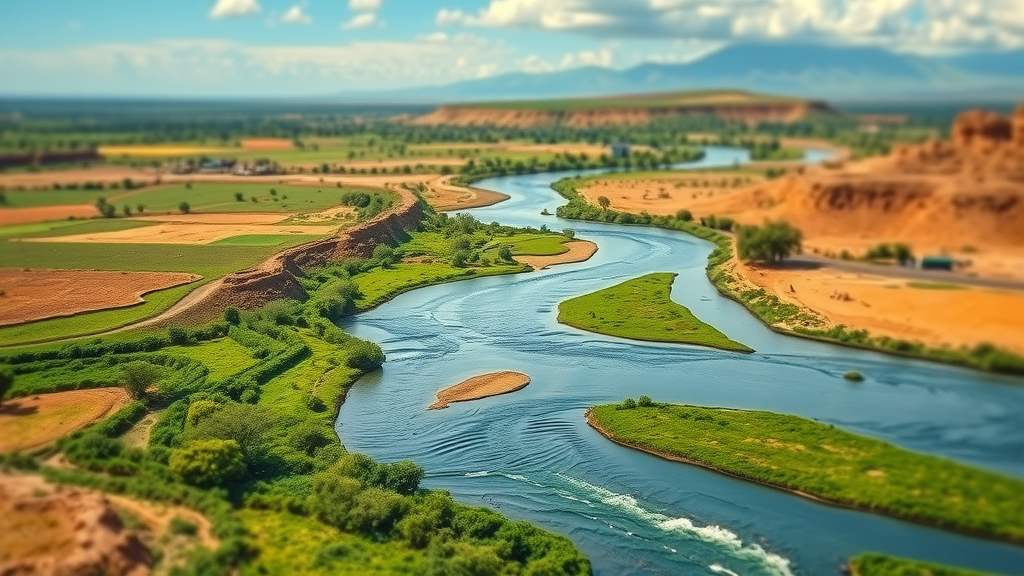
Trade Routes and Civilizational Connections: A Double-Edged Sword
Why Africa's Trade Networks Diverged from Other Regions
Unlike the Mediterranean or the Silk Road which fostered intense cultural exchange, Africa’s trade routes were both a lifeline and a limitation. Overland connections across the Sahara or within the rainforest zones were slow, perilous, and hostile—for much of early history, only the hardiest traders dared traverse them. Rivers helped but rarely connected more than a series of regional hubs. Combined with the periodic isolation forced by shifting climate zones, these factors encouraged african countries to innovate locally while remaining distinct from the rest of the world.
Sea trade—on the Indian Ocean and later the Atlantic Ocean—brought flashes of cosmopolitanism to East Africa and coastal West Africa, linking them to the Middle East, South Asia, and beyond. Yet the sheer breadth of the African hinterland limited the reach and integrative power of these connections. This divergence is why founders and brand architects today must tailor their strategies to fragmented markets—what works in north africa may flop in southern africa, and vice versa.
Case Study: Ancient Africa's Sahara and the Sahel as Passages and Walls
The Sahara and Sahel were not just obstacles but strategic filters—amplifying certain routes and severing others. For instance, trans-Saharan caravans ferried salt, gold, and knowledge between Mediterranean, Sahelian, and west african societies, but only at immense cost and risk. These passageways helped spark the rise of empires like Mali and Ghana yet also allowed epidemics and conflict to reverberate quickly across wide regions.
- The Sahara desert: A vast sea of sand that insulated and isolated societies
- Tropical rain forests: Blocked wheeled transport, spread lethal diseases, and hindered large-scale warfare
- Mountainous highlands: Sheltered indigenous cultures from conquest but made expansion laborious
- Rivers: Sometimes arteries for trade; just as often, unpredictable obstacles
- Changing climate: Long-term cycles (drought, wet periods) repeatedly forced mass migrations and resets
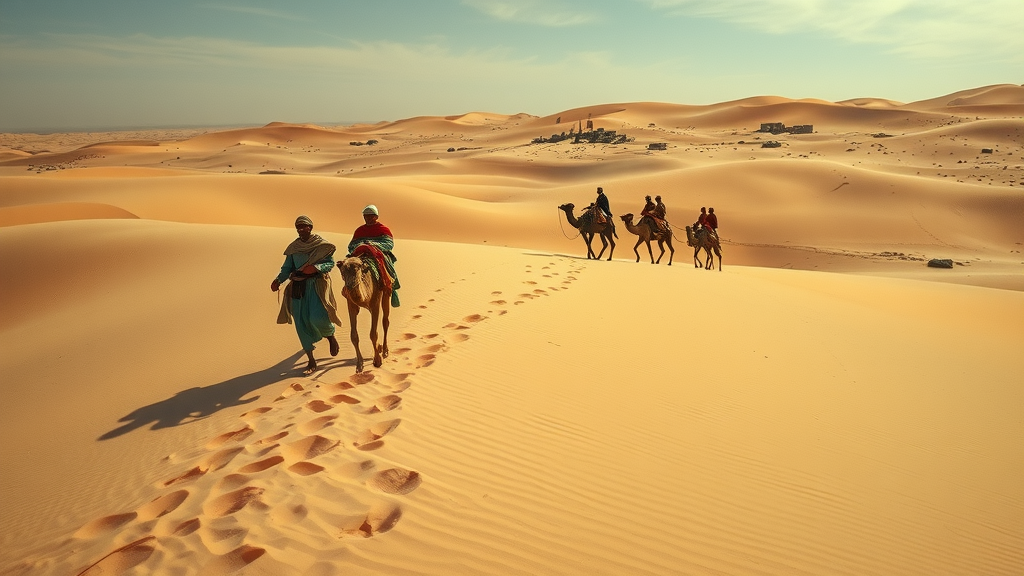
| Trade Route | Primary Barriers | Benefits | Lost Opportunities |
|---|---|---|---|
| Salt-Gold Route (Ghana, Mali) | Sahara desert, bandit attacks, climate extremes | Wealth, urbanization, cultural exchange | Limited to elite traders; few pan-African bonds |
| Red Sea–Nile Corridor | Desert, narrow navigation, political rivalries | Egyptian-Ethiopian connection, Middle Eastern imports | Trade bottlenecks, technological inertia |
| Indian Ocean–Swahili Coast | Monsoon dependency, piracy, local isolation | Cosmopolitan cities (Kilwa, Mombasa), Indian goods | Little effect on continental heartland |
Ancient Africa: Society, Settlement, and the Geography of Adaptation
African Societies: Innovations Born from Environmental Necessity
Necessity, as the saying goes, is the mother of invention—and african societies demonstrated this truth daily. Facing a harsh climate, with unpredictable rainfall, shifting rivers, and swathes of disease-prone rainforest, early Africans adapted their farming, housing, warfare, and trade systems to maximize survival rather than scale. Terraced agriculture in highlands (Ethiopia), shifting cultivation in the rain forests (West Africa), and ingenious water storage techniques in the Sahel—all these are direct responses to natural resources constraints.
The region’s environmental diversity meant that highly localized technologies emerged—iron smelting in Nigeria and Central Africa thousands of years ago, canal irrigation along the Nile, and specialized fishing or animal husbandry according to microclimate. Yet, without common scripts or imperial centers stitching these innovations together, Africa’s knowledge engine ran differently than the pan-regional dynasties of the rest of the world. This is why, even today, local expertise and adaptability are trademark strengths for African brands.
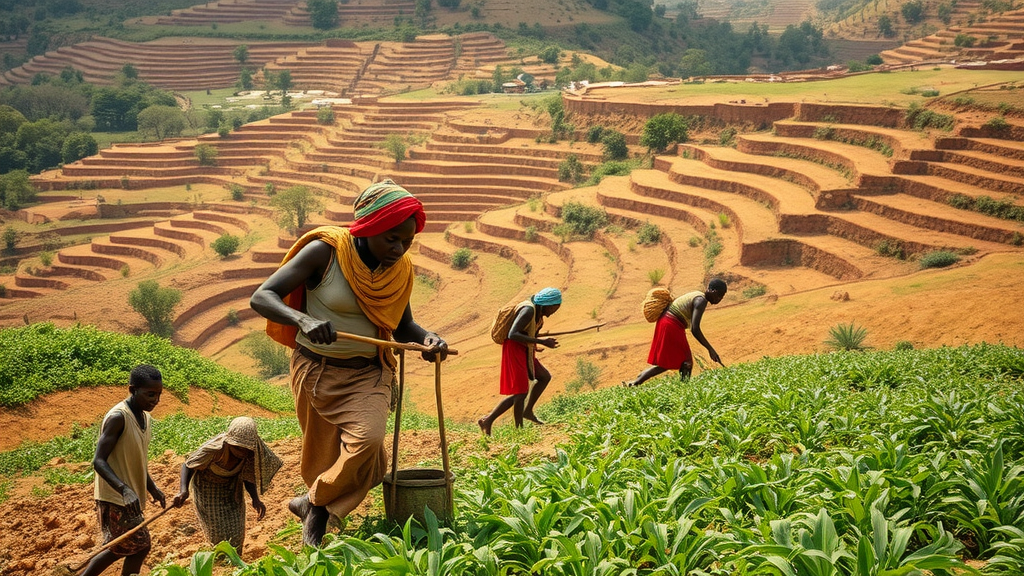
Comparing Ancient Egypt, Nubia, and the Niger Valley
Three case studies show geography’s decisive hand: Ancient Egypt arose along the reliably flooding Nile, enabling a sprawling civilization with surplus wealth, monumental ambition, and enduring bureaucracy—unmatched anywhere else on the continent for thousands of years ago. Nubia (to Egypt’s south, in today’s Sudan) developed its own kingdoms, leveraging the narrow Nile corridor but contending with cataracts and desert on all sides.
Meanwhile, the Niger Valley in west africa saw cities like Jenne-Jeno spring up independently, anchored by river trade but ringed by challenging terrain. While Egypt could rely on the Nile as a civilizational superhighway, the Niger and Congo served as defensive moats as much as trade networks—fragmenting growth, but nurturing incredible ethnic groups, linguistic, and architectural diversity.
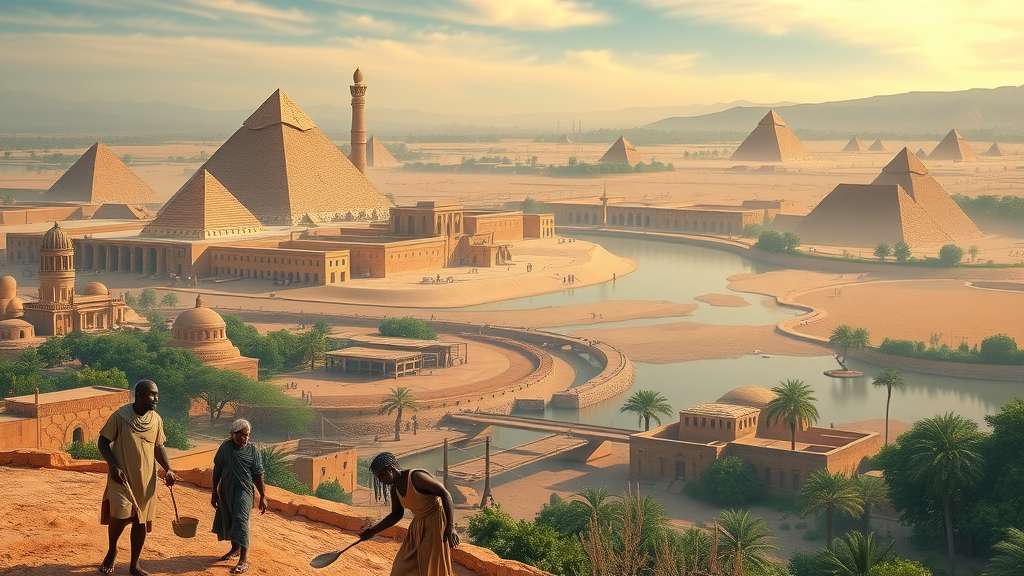
For a panoramic perspective, watch our animated recap: see how Africa’s unique climate patterns, deserts, rainforests, and river systems shaped the destiny of ancient and modern societies—revealing risks, opportunities, and the roots of innovation.
Climate Zone Impacts: The Realities of Progress and Resilience
Savanna, Desert, and Rainforest: Strategic Obstacles for Civilization
The savannas of south africa and the sahara desert form ecological borders that defined where and how societies could flourish. The grasslands supported livestock but were often exposed to invasion, while the deserts were formidable shields—at a cost of regional isolation. Dense rain forests in west africa and central Africa presented entirely different hurdles: poor soils, fierce wildlife, and endemic diseases such as malaria and sleeping sickness. These realities required not only technical innovations but constant vigilance and adaptation from local populations, influencing everything from military tactics to religious practices.
In every climate zone, progress meant resilience: learning which crops would survive drought, when to migrate herds, or how to store water for the dry season. This strategic flexibility is still relevant for African leaders, who must anticipate and pivot in the face of rapidly shifting economic and environmental conditions.
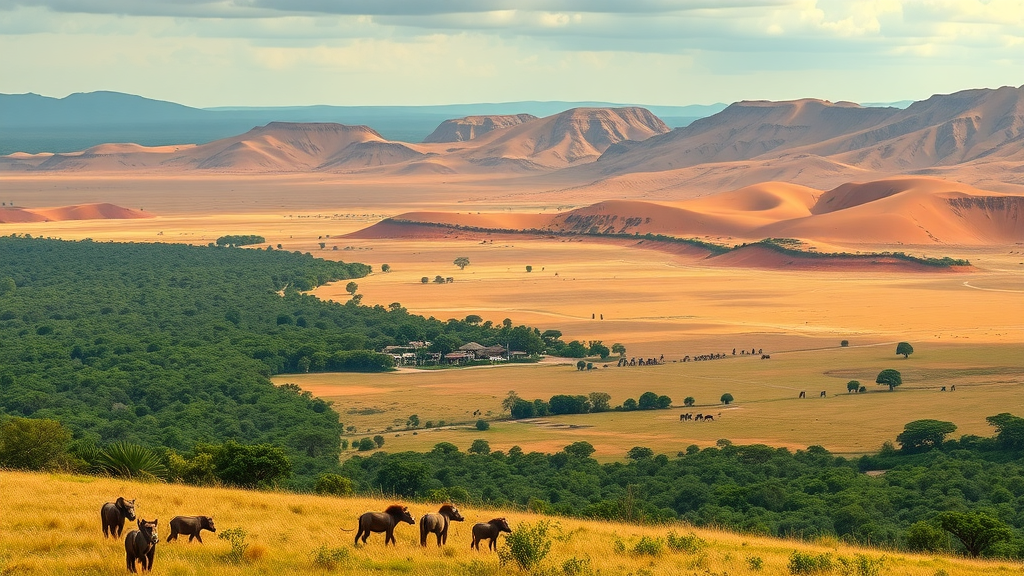
Disease, Wildlife, and Agricultural Constraints
The spread of disease has long been a critical differentiator for development in africa versus the rest of the world. The interplay between environment and health is stark: rainforests bred the tsetse fly, which devastated livestock (crucial for plowing and transportation); river valleys sometimes trapped communities in flood-prone, malaria-infested lowlands. Meanwhile, abundant and diverse wildlife, while culturally central, often competed with humans for resources and transmitted zoonotic diseases.
These agricultural constraints—combined with unpredictable rainfall and poor soils in many regions—meant food production was often precarious. Societies responded with strategies from nomadism to crop diversification, and by developing sophisticated knowledge of local ecosystems. Modern African agribusinesses would do well to operationalize these lessons when planning expansion or investing in regional food security.

One Opinion as to Why-Africa's Geography Worked-Against Its Civilizations Advancement: The Diagnostic Analysis
The Sovereign’s Compass: Understanding Opportunity in Geographic Limitation
A strategic read on African history reframes the question: was geography a curse, or did it simply demand another form of mastery? The “Sovereign’s Compass” is our proprietary framework for understanding how leaders can turn limitation into leverage. Where fragmented climate zones and unpredictable environments once curtailed overland empires, today’s sovereign entrepreneurs must use the same logic to dominate their niche—finding micro-markets, mastering local logistics, and deploying knowledge specific to their terrain.
One opinion as to why-Africa’s geography worked-against its civilizations advancement is less about fatalism and more about strategic challenge. For every geographic obstacle, there’s a blueprint for sovereignty—one built on adaptation, local network-building, and a relentless pursuit of opportunity amid volatility.
Was the Geography of Africa a Barrier or a Blueprint for Survival?
Here’s the paradox: Africa’s geography was a barrier only for those who demanded uniformity and rapid expansion; for those who valued survival, diversity, and sustainable innovation, it was a blueprint. “Adaptation, not imitation, is Africa’s greatest civilizational resource.” Whether in the strategic dispersal of settlements, innovation in microclimates, or the emergence of resilient supply chains, Africa proves that success comes not from imposing external models but from mastering environmental realities on their own terms.
“Adaptation, not imitation, is Africa's greatest civilizational resource.”
Business Takeaways: Leveraging Geographic Insight in the Modern Era
From Past Disadvantages to Present Advantages—The Brand Authority Grader Model
The Brand Authority Grader is East Africa Frontline Media’s tool for 21st-century strategy. By measuring a business’s ability to build around environmental, logistical, and social realities, African leaders can transform traditional “disadvantages” into unassailable strengths. The fragmentation of the market? It’s an opening for hyperlocal brands. Logistical complexity? A chance to create next-generation supply chain solutions.
By building your operations around mastery of african geography—whether that’s controlling last-mile logistics between rain forest towns or designing cloud-based tools for remote entrepreneurs—you seize the sovereign advantage. Entrepreneurial mastery today means not wishing away Africa’s landscape, but using it as your strongest defense against global competitors who cannot adapt as quickly.

Strategic Playbook: Building Networks Across Fragmented Markets
The modern playbook for African founders is evidence-driven and ruthlessly local. Start by mapping out your terrain—literally and figuratively. Identify chokepoints, underserved micro-regions, and cross-border synergies. Build modular logistics to leap across rivers and deserts. Use digital technologies to connect remote supply chains and market nodes. This is where sovereign brands thrive—by building their own trade routes and adapting classic lessons to contemporary challenges.
Strategic networking, coalition-building, and creative infrastructure development—these are indispensable when confronting persistent fragmentation rooted in Africa’s unique geographic DNA. The most resilient businesses are those that anticipate disruption, learn from their own micro-geographies, and double down on local partnership.
Gain direct insight from top African strategy minds as they discuss the tactical shift from geographic “problems” to brand-defining advantages. Position your business where others see only walls—become the master, not the victim, of your market geography.
People Also Ask: How Did Africa's Geography Impact Civilizations?
Direct Impact of Geography: Fragmentation, Diversity, and Innovation
Africa’s challenging geography produced hyperlocalized societies, each adapting to a unique set of climate and terrain pressures. This instilled persistent fragmentation—but also sparked a breathtaking range of innovations in architecture, agriculture, and governance. Where imperial consolidation was structurally difficult, grassroots ingenuity flourished.
The direct legacy for modern-times: African societies are uniquely prepared for resilience. Innovation under pressure and cultural pluralism aren’t just relics—they’re competitive advantages for brands, governments, and communities, enabling agile adaptation in today’s unpredictable global economy.
People Also Ask: How Did the Geography of West Africa Influence Their Development as Civilizations?
Exploring West African Rainforests, Rivers, and Resource Routes
The landscape of west africa features dense rain forests, powerful rivers, and a climate of pronounced wet and dry seasons. The rivers (like the Niger and Volta) became the arteries of early civilization and conduits for trade routes—but their swampy deltas and the thick canopy limited overland travel and settlement. Societies thrived in pockets, trading via waterways and developing sophisticated, context-driven solutions to agriculture and governance.
The outcome? West African civilizations’ development was inherently decentralized, marked by city-states and kingdoms that adapted to their ecological realities instead of pursuing monolithic models. For modern founders, it’s an instructive lesson: agility and micro-focus often beats scale-for-scale’s-sake.
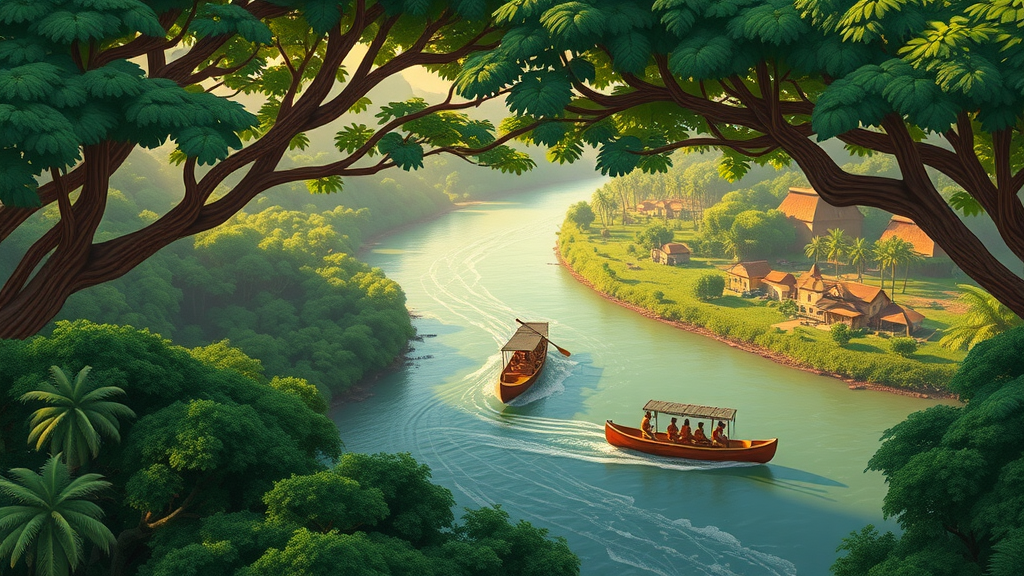
People Also Ask: What was One Challenging Aspect of Adapting to African Geography?
Disease, Isolation, and Environmental Adaptation
One of the most difficult hurdles was, and remains, disease. Many regions in central and west Africa grappled with the tsetse fly and malaria-transmitting mosquitoes, drastically limiting livestock use—and by extension, agricultural output and mobility. Environmental adaptation required constant vigilance: planting diverse crops, building houses that repelled pests, and inventing local tools.
Isolation and the need for adaptation are not historical curiosities—they continue to shape business outcomes, food systems, and supply chains in modern-day Africa. Success comes to those who make these variables central to their operational and product strategy.
People Also Ask: In What Ways Does the Geography of Africa Prevent the Progress of the Continent's Civilizations?
Present-Day Infrastructural Fragmentation Rooted in Geography
Much of Africa’s infrastructural and economic fragmentation stems from the same geographic constraints that shaped ancient societies. Road and rail networks often mirror ancient trade paths, weaving around impassable rivers, deserts, or mountain ranges. This impacts everything from moving goods to integrating supply chains across african countries.
Today, forward-thinking governments and businesses are investing in technology and cross-border partnerships to conquer these geographic limits. The lesson for strategic leaders: geography need not dictate destiny, but ignoring it creates persistent operational blind spots.
FAQs: One Opinion as to Why-Africa's Geography Worked-Against Its Civilizations Advancement
-
What are the main geographic obstacles faced by African societies?
The main obstacles include vast deserts (Sahara, Kalahari), dense rainforests with disease barriers, erratic river systems that hinder continental navigation, and diverse climate zones requiring constant innovation and adaptation. -
Did African civilizations innovate despite these obstacles?
Yes—African societies demonstrated remarkable innovation, inventing local crop varieties, adaptive architecture, water management systems, and community-based governance. Many innovations arose directly from environmental necessity. -
How do modern African businesses overcome geographic challenges?
Through digital connectivity, agile logistics, strategic local partnerships, and bespoke product development that reflect microregional realities—not by copying global standards, but by mastering the unique logic of the continent’s geography.
Watch: Animated Breakdown—Geographic Myths vs. Historical Realities in Africa, and see how understanding the true impact of geography can alter your leadership thinking forever.
Key Takeaways: The Strategic Utility of Geographic Understanding
- Africa’s geography imposed structural challenges—but it also fostered remarkable innovation and adaptability.
- Modern African leaders must treat geography as a strategic lever for differentiation and advantage, not a passive backdrop.
- ‘Geographic fatalism’ is outdated thinking. In the age of sovereign brands, strategic mastery of African geography is power.
Conclusion: The Path Forward for African Civilizations and Strategic Leadership
“Africa’s future will not be dictated by its map, but by the will to master it.”
Action: Ready to build your digital fortress? Explore strategic insights for African founders at The Founders Africa. Visit https://east.africafrontlinemedia.com
Africa’s diverse geography has significantly influenced the development of its civilizations. The continent’s vast size encompasses a range of climates and terrains, from the Sahara Desert to tropical rainforests and savannas, each presenting unique challenges and opportunities.
The Sahara Desert, for instance, acted as a formidable barrier, limiting interaction between North and Sub-Saharan Africa. This separation led to the development of distinct cultures and hindered the exchange of ideas and technologies. The desert’s harsh conditions made overland travel and trade arduous, contributing to the isolation of various societies. (staffweb.psdschools.org)
In contrast, the Nile River’s predictable flooding patterns supported intensive agriculture, enabling the rise of ancient Egyptian civilization. The river’s fertile banks allowed for surplus food production, which in turn supported population growth and the development of complex societal structures. (openstax.org)
However, other regions faced significant obstacles. The presence of the tsetse fly in certain areas, for example, prevented the use of draft animals and hindered agricultural productivity. This limitation affected the ability to develop large-scale farming and transportation systems, impacting economic and social development. (en.wikipedia.org)
Moreover, Africa’s varied climates and terrains led to the development of diverse cultures and languages. While this diversity is a testament to the adaptability of human societies, it also posed challenges for the formation of large, centralized states. The continent’s geography often favored smaller, localized communities over expansive empires. (en.wikipedia.org)
In summary, Africa’s geography has played a pivotal role in shaping its civilizations. While certain features provided opportunities for development, others imposed constraints that influenced the trajectory of societies across the continent.
 Add Row
Add Row  Add
Add 


Write A Comment